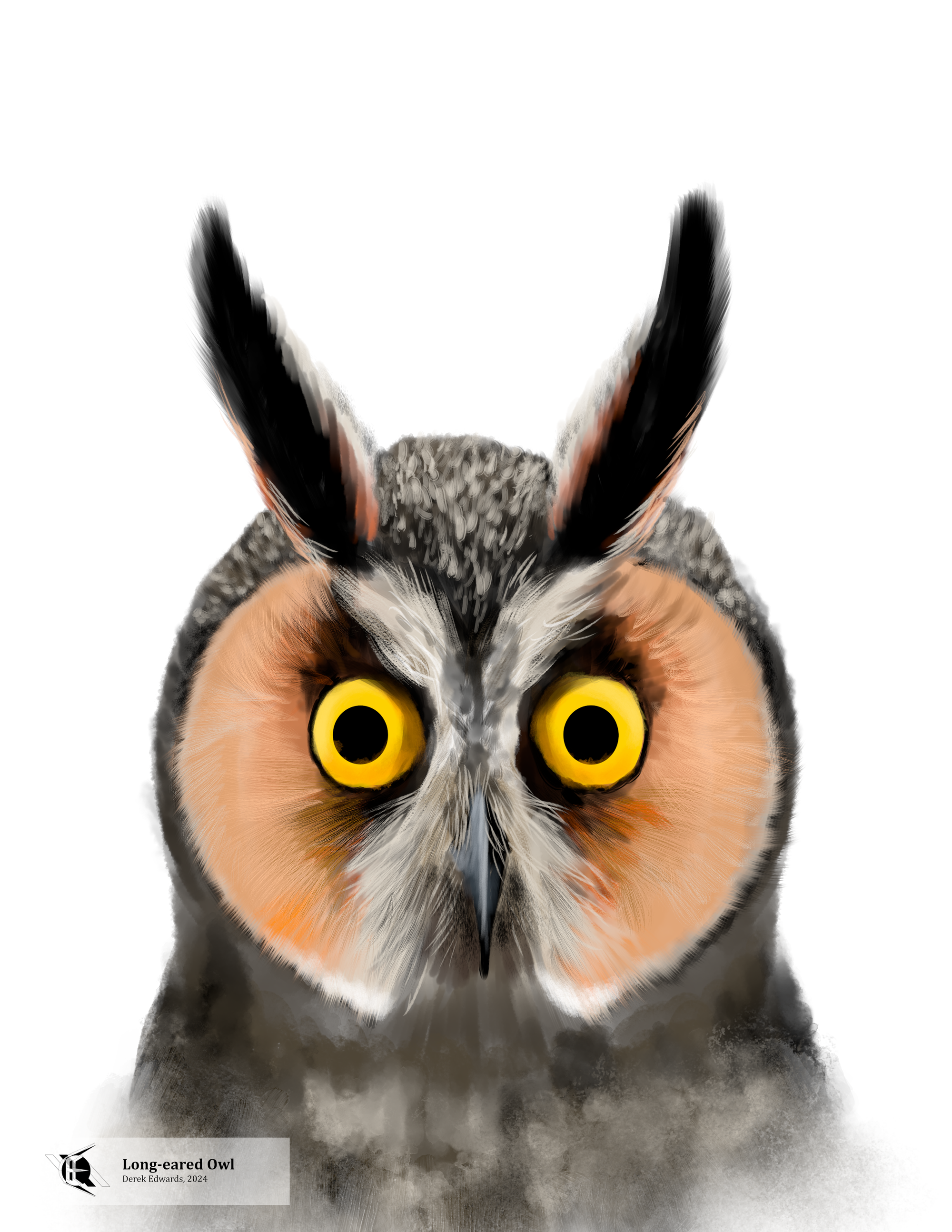
Running Commentary 6/3/2024
Hello,
It's June, which means that the spring migration is generally regarded to be over. I managed to see 6 migrants I hadn't seen before this Spring, which was pretty good. Now we enter the summer, which is actually probably the worst season for birding. That's not to say there's not birding to be done, but between no migrants, the birds that are in the area being busy with their nests, and the heat, summer's the worst season for birders. Still, I'll let you know if I see anything good.
Anyway...
Watching...
Jenny Nicholson on the Galactic Starcruiser
If you're a long-time reader who checks out the Curation links at the end of the newsletter, you might remember me once recommending a four-hour YouTube video about a theme park called Evermore. In that video, Jenny Nicholson detailed the history of the park, recounted her experience attending it, and gave thoughts on why it wasn't living up to its promises of providing a place to live out a fantastical story. Well, at risk of pigeonholing herself, she's done the same thing about the Star Wars Galactic Starcruiser experience at Disney World (which has, since she began working on the video, closed up shop). I was going to throw this video into the Curations too, but given that it's Star Wars, I have more than a quick paragraph of thoughts about it, which I'll give here:
Unlike Nicholson, I'm not one for theme parks. I've never been to one, and I've never wanted to go. I've seen plenty of ads for Disney World and Disney Land without ever once feeling enticed to go. Part of that is the fact that I don't like carnival rides, but a bigger part of it is my general resistance to being made happy. I'm not an unhappy person, but when people I don't know are trying to make me happy I get weirded out. I don't like touristy spots and other artificially constructed happy places, your Makinaw Cities or what have you. I'm not alone in this, but I understand that most people do, in fact, have a good time at Disney World, or would if they went. So when Disney inevitably started building their newly acquired Star Wars brand into their parks, even though I, a dedicated Star Wars fan, didn't at all care to go, I hardly took that as a sign that the Star Wars corner of the parks wouldn't be constantly full of other Star Wars fans having a grand old time. And they were; Galaxy's Edge has been a big success with parkgoers. When the Galactic Starcruiser was announced, I initially thought it was a pretty clever idea; use enough imagineering to convince people they're aboard a space ship, then let them enjoy a cruise ship experience. But that's not exactly what it was.
I'll let you watch Nicholson's video to see her experience with nickle-and-dime pricing, the lack of amenities specifically paid for ahead of time, and the way much of what was in the Galactic Starcruiser experience was an upsold version of things originally promised as part of the main Galaxy's Edge park. What I want to talk about is the narrative conceit of the project, something Nicholson doesn't especially focus on and something I can form an evaluation of without actually going there: Nicholson repeatedly calls the Galactic Starcruiser experience a "LARP", a term she thinks Disney shies away from in marketing because it would scare away normie parkgoers who don't know about LARPing either from personal experience or from watching Hawkeye. I'd argue, though, that it isn't LARPing at all. I'm not a LARPer (though I do watch Hawkeye every Christmas) but from what I understand the narrative of a LARP session is shaped by player actions. The narrative of the scenes that play out aboard the Galactic Starcruiser, by contrast, is pre-determined, playing out ultimately the same way regardless of what the "passengers" do. Now there are plenty of interactive narratives (video games, mostly) where the story is similarly "on rails" and not effected by player input, but in these the player is still acting as a central character. Starcruiser passengers are peripheral to the Starcruiser story, with the core roles held by the (for once quite aptly-named) cast members, who might give you some task to do if you ask them but who will proceed through the story largely the same as ever regardless of what you do. You're being humored moreso than included. I'm reminded of nothing so much as little kids shouting "a clue, a clue!" at Steve when a blue pawprint appears onscreen behind him. That kind of patronizing "good job for helping" sort of interactive entertainment really loses its shine once people turn six. Then again, it's hard to imagine how a hotel full of people could all be made meaningfully part of the adventure, as a practical matter. I think they should have just focused on it being a cruise in space; that might have lasted longer.
Reading...

What an Owl Knows by Jennifer Ackerman
Jennifer Ackerman has, by now, written several books about birds. An earlier work of hers, The Genius of Birds, is among my favorite books about birds; I could have sworn I'd mentioned it in an earlier newsletter, but I can't find that I did, so I must have read it just before launching RC. Her latest book is What an Owl Knows: The New Science of the World’s Most Enigmatic Birds, which is more a book about what we know about owls than what owls know, but whatever, that's not as good a title. Owls are birds that we're more curious than knowledgeable about. They are, as Ackerman notes early on, the only birds with even vaguely human faces; the fronts of their heads are round and flat, with forward-facing eyes and a relatively unobtrusive beak. Granted, this is an illusion; their faces are re-shaped by their feathers, and look more like those of other raptors otherwise. But still, owls are vaguely human-looking, they're found in some form or another everywhere people live, and yet they aren't seen frequently by most people, because they're largely nocturnal and second only to the nightjars in their focus on camouflage. This has led to an uninformed fascination of the sort usually reserved for extinct or deep-sea creatures.
Ackerman recounts examples of this fascination, but she goes further in engaging with active owl researchers to find out some actual facts about the birds. Some highlights:
- Owls, as a rule, do not build nests, instead taking over nests or holes left by other creatures.
- Owls, as a rule, avoid each other except during mating.
- Owls, as a rule, respond to threats by hiding, rather than fleeing, as other birds typically do.
- Owls, as a rule, navigate the world by sound as much or more as by sight, and their round faces work the same as the fleshy fins on the outside of our ears and those of most mammals, to focus the sound to their eardrums.
- Owls, as a rule, have very quiet wings, and there is some debate about whether this is to keep their prey from hearing them or to ensure they can hear their prey over their own wings.
There are exceptions to all of these rules, which provide for some interesting case studies in this book: the fish eagles who can't hear their underwater prey, the burrowing owls that dig nesting holes into the sides of South American hills, etc. Another that I'll be mentioning in the below Bird of the Week. This book is quite dense with information and not easily read in a single sitting, even though it isn’t terribly long. It is broken down nicely by chapter, and by subchapter if chapters are long.
Ackerman’s writing is quite good. Her love of birds is apparent in how she describes owls here. You get a sense of learning more about owls with her, the way the book progresses. And you learn a lot about owls, even if you already know a bit about them. While the focus on just owls can make the book feel more limited than The Genius of Birds, I liked this book more.
Playing...

Warframe
DevStream 180 came with lots of news about the upcoming update, which you can look at in the recap; I'd just like to touch on a couple of things we didn't know in 179:
- Jade's powers have been revealed. She is indeed a support frame, and from what I can tell, she'll be a popular one. Her 1 places a field that heals allies and damages enemies. How much it damages enemies is unclear for now; I'm not expecting something you can place on a defense objective or busy hallway and AFK though, based on what we saw. Her 2 buffs the squad's shield regen, ability strength, or weapon damage, depending on what she sets it to. Her 3 slows and armor strips enemies; armor strip is always welcome, but slow is somewhat situational, so I'm not sure how useful this power will be. It does revive any downed team-mate in line-of-sight from Jade when cast, but that's also not an incredibly common use case. Her 4 allows her to fly, which will be a good thing in a lot of cases. When flying, she's restricted to using an exalted weapon that looked very reminiscent of Hildryn's, that is to say, not fantastic, but it will debuff enemies with an effect that makes them more vulnerable to damage, so, again, it might be effective squad support. And flying will come in handy during...
- ...the new game-mode. Described as a better, more active version of hijack, in an ascension mission there'll be an objective on an elevator, and Tenno will have to power it as it rises upward while keeping up with it and dealing with enemies. It looks like a decent time, which is good because this will be what we do in a clan event. Once again, we'll be earning arcanes, but DE will cap how many you can earn to keep players from burning themselves out. (only two full sets of 21 per arcane)
The update comes June 18th. I'll be playing it around then and I'll let you know what I think of it then.

Bird of the Week
Owls are, as a general rule, solitary creatures. Parrots and starlings and gulls may gather in large flocks, but the same is not true of owls. A group of owls is known as a "parliament", a strange term that appears to date back to the poem A Parlement of Foules by Geoffrey Chaucer – which, incidentally, is one of the first written works to reference Valentine's Day as a day for lovers1 – and which was further popularized when C.S. Lewis included a literal parliament of owls, advisors to King Caspian, in his fourth Chronicle of Narnia, The Silver Chair. The strange term has stuck ever since.2 But actual owls don't gather in large groups, much less form representative governing bodies. Can you imagine it, seeing hundreds of owls all gather in the center of some old European town? What a ridiculous notion! And yet, that's exactly what happens in the case of one particular species of owl: the Long-eared Owl.
Before we get to these gatherings, a few words about the owl itself: All owls have ears, with nearly all depending on acute, directional hearing to find prey in the dark of night. These ears are not visible, hidden under the thick feathers of their heads. The "ears" of so-called eared owls are not ears at all. Rather they are tufts of feathers used to signal emotion and to break up the owl's silhouette as it hides in trees. The long-eared owl is distinguished by these "ears" from its close cousin, the short-eared owl, which has such short "ears" that it looks almost earless. Long-eared owls are found throughout the northern hemisphere between the Arctic and the Tropic of Cancer, living in open woodland. They nest in trees, re-using stick-bowl nests built by other birds, mostly hawks or corvids, a practice shared by many owls. They are, uncharacteristically for owls, not especially territorial, only getting prickly about intruders in the immediate area around the nest.
Which gets me back to the gatherings: long-eared owls, unlike most of their kind, will roost together, sometimes shoulder-to-shoulder. In the Serbian town of Kikinda, long-eared owls will seasonally gather by the hundreds in the pines in the town center, which has been declared a nature preserve, despite being an urban area. The town celebrates November as "Sovember" (from the Serbian word for owl, "sova"), and the trees are not decorated for Christmas, so as not to disturb the roosting owls. The ornithologist Milan Ružić estimates that some 30,000 long-eared owls roost in northern Serbia during the winter; he himself once saw 743 owls in a single day while surveying the roosts, an owl-spotting world record.3 Why do long-eared owls do this? Perhaps they seek safety in numbers; long-eared owls are by far the most preyed-upon owl in most of their range, especially vulnerable to the goshawk.4
The long-eared owl is sometimes called the "cat owl", due to its especially feline appearance. To science, it is Asio otus; both of these are Latin names for eared owls, not necessarily this one in particular originally.5 In Serbian it is called Utina.
- Oruch, Jack B. “St. Valentine, Chaucer, and Spring In February.” Speculum 56, no. 3 (July 1, 1981): 534–65. https://doi.org/10.2307/2847741.
- Birdfact. “What Is a Group of Owls Called? (Complete Guide).” Birdfact, September 13, 2023. https://birdfact.com/articles/what-is-a-group-of-owls-called.
- Ackerman, Jennifer. What an Owl Knows: the new science of the world’s most enigmatic birds. Scribe Publications, 2023. p. 179-181
- Mikkola, Heimo. “Owls Killing and Killed by Other Owls and Raptors in Europe.” British Birds. Vol. 69–69, March 1, 1976. https://britishbirds.co.uk/sites/default/files/V69_N04_P144_154_A030.pdf.
- Jobling, J. A. (editor). The Key to Scientific Names in Birds of the World (S. M. Billerman et al. editors), Cornell Laboratory of Ornithology, Ithaca.
Curation Links
Fink, a police informer | Anatoly Lieberman, OUPblog
Etymology of the word “fink”, as in, someone who betrays his co-conspirators to the authorities, or, at least, an attempt at etymology, and a debunking of false etymologies. It’s unclear where the term actually came from, but the main stories offered all seem dubious.
How to Display a Hoatzin | Katherine McLeod, Distillations
“How do you display a hoatzin? The short answer is you don’t, because you can’t. Over the course of the last 115 years, zoos around the world have tried—and mostly failed—to collect, transport, and exhibit these mysterious birds. Less than ten have made it to a zoo alive, and the few survivors never lived long. Why, you ask, would zoos continue to pursue such a seemingly futile (and frequently deadly) endeavor? The answer involves the scientific goals of 19th-century zoos, the lure of seemingly “exotic” tropical creatures, and, more often than not, sheer stubbornness.”
‘How do you reduce a national dish to a powder?’ | Amelia Tait, The Guardian
A look at the world of cuisine as reinterpreted as potato chips. Third party operations develop, in surprising secrecy, powdered flavorings made to uncannily match such things as pickles, lasagna, and oven-roasted chicken. These are put on the blank slate of potato chips and sold in stores around the world; the study of which countries might want what flavor chips is itself a big business supporting this big business.
Strings | DUST
[FICTION] [VIDEO] “’Strings’ is an action short about a captive woman who is kept sedated for a very good reason. She is extremely valuable, and the battle to free her will determine her fate.” (5 minutes) This short is indeed pretty short, but there’s a well shot and choreographed fight scene better than what’s in a lot of feature films.
See the full archive of curations on Notion






Member Commentary